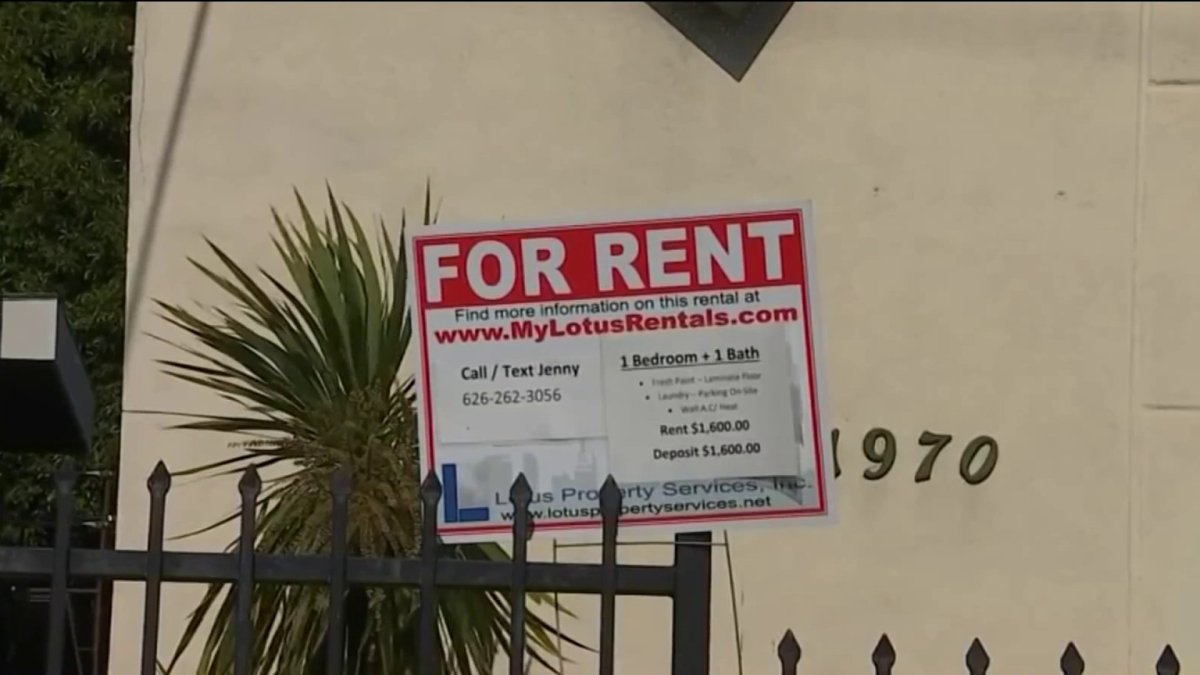Affordable Rent Protections: Potential Rollback And Market Impact

Table of Contents
Current State of Affordable Rent Protections
Existing Rent Control and Stabilization Laws
Rent control and rent stabilization laws are designed to protect tenants from excessive rent increases. However, the strength and scope of these protections vary significantly across different regions. Some areas boast robust rent control policies that limit annual rent increases to a percentage below inflation, while others offer minimal or no protection, leaving renters vulnerable to unpredictable and often exorbitant rent hikes. The effectiveness of these laws often depends on factors such as:
- Examples of strong rent control policies: New York City's rent stabilization laws, parts of California's rent control measures. These policies often include specific guidelines on allowable rent increases and eviction protections.
- Areas with weak or no protections: Many states have no statewide rent control laws, leaving local jurisdictions to decide, resulting in a patchwork of protections (or lack thereof). This creates significant inequities across different areas within the same state.
- The impact of local vs. state-level legislation: State-level legislation provides broader, more consistent protections than local ordinances, which can be easily overturned or weakened by local government changes. Strong state-level rent stabilization laws provide a more stable and predictable environment for renters.
The Role of Eviction Moratoriums
Eviction moratoriums, often implemented during crises like the COVID-19 pandemic, temporarily prevent landlords from evicting tenants. While crucial for preventing widespread homelessness during emergencies, these are typically temporary measures. The long-term impact and effectiveness are debated:
- Effectiveness of moratoriums: Moratoriums have been shown to be effective in preventing immediate displacement, but they do not address the underlying issue of affordability.
- Challenges in enforcement: Enforcement can be challenging, with some landlords finding ways to circumvent the moratoriums.
- Long-term effects on tenant stability and landlord-tenant relationships: While moratoriums provide short-term relief, they can strain landlord-tenant relationships and may not resolve the underlying financial difficulties faced by renters.
Potential Impacts of a Rollback on Affordable Rent Protections
Increased Rent Burdens and Displacement
A rollback of affordable rent protections would likely lead to significant rent increases, disproportionately affecting low-income households. This could result in:
- Statistics on rent affordability: Data consistently shows that a significant percentage of renters are cost-burdened, meaning they spend more than 30% of their income on rent. A rollback would exacerbate this problem.
- Potential increase in rent prices post-rollback: Historical data from areas where rent control has been weakened or eliminated show dramatic rent increases following the removal of protections.
- The vulnerability of low-income households: Low-income households and marginalized communities are most vulnerable to displacement as they have less financial flexibility to absorb significant rent hikes.
Strain on Affordable Housing Supply
Reduced protections could incentivize landlords to raise rents, potentially driving tenants out of their homes and reducing the already limited supply of affordable housing units. This can lead to:
- Relationship between rent control and housing supply: While some argue that rent control discourages new construction, studies show a complex relationship, and that properly designed rent stabilization can encourage investment in existing affordable units.
- Potential for increased development of luxury housing: Without rent controls, developers may be incentivized to focus on building luxury housing, further shrinking the affordable housing stock.
- The impact on affordable housing initiatives: Rollbacks of rent protections undermine existing affordable housing initiatives, making it harder to achieve housing goals and increase overall housing insecurity.
Social and Economic Consequences
The broader societal impacts of reduced affordable rent protections are far-reaching:
- Correlation between housing instability and health outcomes: Housing instability is directly linked to poorer health outcomes, including increased stress, mental health issues, and chronic illnesses.
- Impact on local economies: High rates of housing instability weaken local economies, as residents are less likely to invest in their communities and participate fully in the local marketplace.
- Increased crime rates: Studies have shown a correlation between housing instability and increased crime rates.
The Housing Market Impact of Reduced Rent Protections
Increased Housing Costs and Volatility
A rollback of affordable rent protections would likely lead to:
- Impact on homeownership affordability: Increased rental costs can indirectly impact homeownership affordability, as potential homebuyers may struggle to save for a down payment while facing high rents.
- Potential for rental market speculation: Reduced protections can create an environment ripe for speculation, driving up rental costs further.
- Increased competition for limited affordable units: The competition for the dwindling supply of affordable housing units will intensify, leading to higher rents and increased stress for renters.
Investment Implications
The potential impact on investment in affordable housing projects is significant:
- Decreased return on investment: Without strong rent protections, the return on investment in affordable housing projects may be seen as less attractive to developers and investors.
- Disincentive for building affordable housing: Developers may be less likely to invest in affordable housing if they anticipate lower returns compared to luxury developments.
- The role of government subsidies: Government subsidies play a crucial role in supporting affordable housing development; rollbacks of rent protections could reduce the effectiveness of these subsidies.
Conclusion
Rolling back affordable rent protections carries significant negative consequences. Increased rent burdens will lead to displacement and homelessness, strain the already limited supply of affordable housing, and have far-reaching social and economic impacts. Maintaining strong tenant rights is crucial for the stability of communities and the well-being of millions of renters. The potential for increased housing costs, market volatility, and decreased investment in affordable housing projects underscores the urgent need to protect and strengthen affordable rent protections.
Call to Action: We urge you to advocate for strong affordable rent protections in your communities. Contact your elected officials, support organizations working on affordable housing initiatives, and become an active participant in protecting affordable housing for everyone. The long-term economic and social benefits of maintaining robust affordable rent protections far outweigh any perceived drawbacks. Let's work together to ensure that everyone has access to safe, stable, and affordable housing.

Featured Posts
-
 Romes Champion Ambition Beyond Victory
May 28, 2025
Romes Champion Ambition Beyond Victory
May 28, 2025 -
 Jannik Sinner Doping Allegations Serena Williams Perspective On Lengthy Bans
May 28, 2025
Jannik Sinner Doping Allegations Serena Williams Perspective On Lengthy Bans
May 28, 2025 -
 Best Tribal Loans For Bad Credit Direct Lender Options
May 28, 2025
Best Tribal Loans For Bad Credit Direct Lender Options
May 28, 2025 -
 Update Prakiraan Cuaca Bandung Dan Jawa Barat 23 4 Waspada Hujan Lebat
May 28, 2025
Update Prakiraan Cuaca Bandung Dan Jawa Barat 23 4 Waspada Hujan Lebat
May 28, 2025 -
 Winning Euro Millions Ticket Urgent Appeal After Irish Shop Sale
May 28, 2025
Winning Euro Millions Ticket Urgent Appeal After Irish Shop Sale
May 28, 2025
Latest Posts
-
 Aktuelle Entwicklung Des Bodensee Wasserstands Anstieg Oder Rueckgang
May 31, 2025
Aktuelle Entwicklung Des Bodensee Wasserstands Anstieg Oder Rueckgang
May 31, 2025 -
 Bodensee Wasserstand Aktuelle Entwicklung Und Zukuenftige Aussichten
May 31, 2025
Bodensee Wasserstand Aktuelle Entwicklung Und Zukuenftige Aussichten
May 31, 2025 -
 Steigt Der Wasserstand Des Bodensees Aktuelle Pegelstaende Und Prognosen
May 31, 2025
Steigt Der Wasserstand Des Bodensees Aktuelle Pegelstaende Und Prognosen
May 31, 2025 -
 Sanofis Respiratory Pipeline Update Asthma And Copd Focus
May 31, 2025
Sanofis Respiratory Pipeline Update Asthma And Copd Focus
May 31, 2025 -
 New Data And Clinical Trial Plans Sanofis Progress In Respiratory Diseases
May 31, 2025
New Data And Clinical Trial Plans Sanofis Progress In Respiratory Diseases
May 31, 2025
